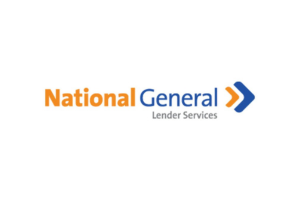Smart homes, Smart policies: How smart home tech is impacting home insurance
Our homes are getting smarter by the day, and it’s not just about dimming the lights with your voice. According to one study, 69% of US households already have at least one smart device. The leader of the pack? Video doorbells, with a cool 20% penetration rate in American homes.
These aren’t just gadgets; they’re technology with the potential to prevent disasters, deter crime, and even help you catch the package thief. But what does this mean for the home insurance sector? Let’s get into it.
What is smart home technology?
Put simply, smart home technology is the internet-connected devices that automate and remotely control features in your home, like lighting, thermostats, and security systems. And a lot of tech falls under smart home technology, including:
- Video doorbells: See who’s at your door remotely and deter break-ins.
- Smart thermostats: Automate heating and cooling for comfort and energy savings.
- Water leak detectors: Prevent costly water damage by identifying leaks early.
- Smart security systems: Control locks, lights, and cameras for enhanced home security. Some even eliminate physical keys and grant access remotely or through voice commands.
- Air quality sensors: Monitor air quality and adjust thermostats or air purifiers for a healthier home.
- Voice assistants: Control smart devices and access information hands-free.
- Smart smoke & CO detectors: Receive alerts and monitor real-time safety hazards.
- Smart plugs: Control any appliance remotely, schedule power on/off, and track energy consumption.
You likely have one of these devices already in your home, or perhaps one that isn’t listed above – like smart TVs. Many smart home studies don’t include them, mostly because they’re ubiquitous now (almost as common as a toaster these days) and their impact on, say, security or energy savings is minimal. While smart TVs can connect to the internet and offer streaming services, they don’t actively participate in automating or monitoring your home environment – the core function of most smart home tech.
However, you will notice that one other item on the list could fall into a similar category: voice assistants. So, why do smart TVs get ignored while voice assistants don’t? Well, while most people primarily use voice assistants to play music or ask, “Can dogs eat carrots?” while cooking with an eager puppy staring up at them, they can do much more. Namely, they can be used to control other smart home devices from security cameras and smart locks to smoke detectors and thermostats.
How does smart home tech impact home insurance premiums?
Smart home technology should, in theory, lower home insurance premiums. Here’s why: these devices enhance security and safety, reducing the likelihood of costly incidents like break-ins or fires. Both insurers and policyholders benefit from this. Homeowners enjoy increased security and potential savings, while insurers face fewer claims. Recognizing these advantages, some insurers now incorporate smart home technology into their plans. For example, American Family Insurance offers discounts for homes equipped with certain types of smart devices.
However, it doesn’t always pan out this way. In the UK, smart home-based insurance often costs more than traditional policies. The higher premiums account for the value of the installed tech itself. Consequently, many opt out, seeing it as an expensive add-on rather than a benefit. While the UK market differs from the US, this situation serves as a cautionary tale. It suggests potential hurdles for insurers who must balance tech costs with policy pricing.
The real benefits of smart home tech for insurance
Let’s drill a little further into the specifics. Smart home technology is transforming the insurance landscape, offering a range of benefits that can make homes safer, claims processing quicker, and insurance premiums more tailored. Here’s how:
- Cost savings/discounts: Many insurance companies are now offering discounts for installing specific smart home devices. These incentives can help offset the initial cost of the technology while encouraging homeowners to adopt risk-reducing measures.
- Faster claims processing: Accurate, real-time data from smart devices enables insurers to quickly assess and verify incidents.
- Risk mitigation and prevention: Smart smoke detectors, water leak sensors, and smart security systems can proactively prevent disasters before they happen. By mitigating these risks, homeowners are less likely to file claims, which could lead to lower premiums over time.
- Personalized premiums: By tracking usage patterns like energy consumption and security measures, insurers can create personalized risk assessments for each homeowner. This translates to premiums that accurately reflect your individual risk profile, potentially rewarding responsible behavior with lower costs.
- Data collection and analysis: By anonymizing data from smart homes like occupancy patterns, appliance use, and even environmental conditions, insurers gain a clearer picture of overall risk. This translates to more accurate assessments and potentially lower premiums for everyone.
- Carbon footprint reduction: Smart thermostats and other energy-efficient devices can not only reduce energy bills but also contribute to a lower carbon footprint for the home. While not a direct insurance benefit, being environmentally responsible is important for many policyholders.
Bonus benefit: One study found that in the UK, people are willing to pay more for a home with smart home technology. For homeowners, this means investing in smart devices could potentially increase the value of your home.
What are the considerations?
Smart home technology undoubtedly offers benefits to both insurers and homeowners, but that isn’t to say there aren’t important considerations at play here.
First, smart home technology gathers a lot of data, and many insurers want access to this data. This makes sense – the more information they have about your home and habits, the more accurately they can assess your risk profile. However, this data collection raises privacy concerns for many homeowners. The idea of insurers having access to information about your daily routines, energy consumption, and even when you’re away from home can feel intrusive.
Transparency is key. Insurers need to be upfront about what data they’re collecting, how they’re using it, and how they’re protecting it. Homeowners need to feel comfortable with the data exchange and understand how it benefits them. For example, clear communication about anonymization practices and data security measures can help build trust.
Similarly, insurers will need to expand their data centers to accommodate this influx of information and continue their investment in cybersecurity to ensure the safe and responsible handling of homeowner data.
Final thoughts
Smart home technology is revolutionizing the insurance industry. While the benefits are numerous – from faster claims processing to personalized premiums – there are considerations. Privacy concerns around data collection are paramount.
Ultimately, smart homes and policies can create a win-win situation for insurers and homeowners. By working together and addressing potential pitfalls, this partnership can lead to a safer, more cost-effective, and more secure future for everyone.











